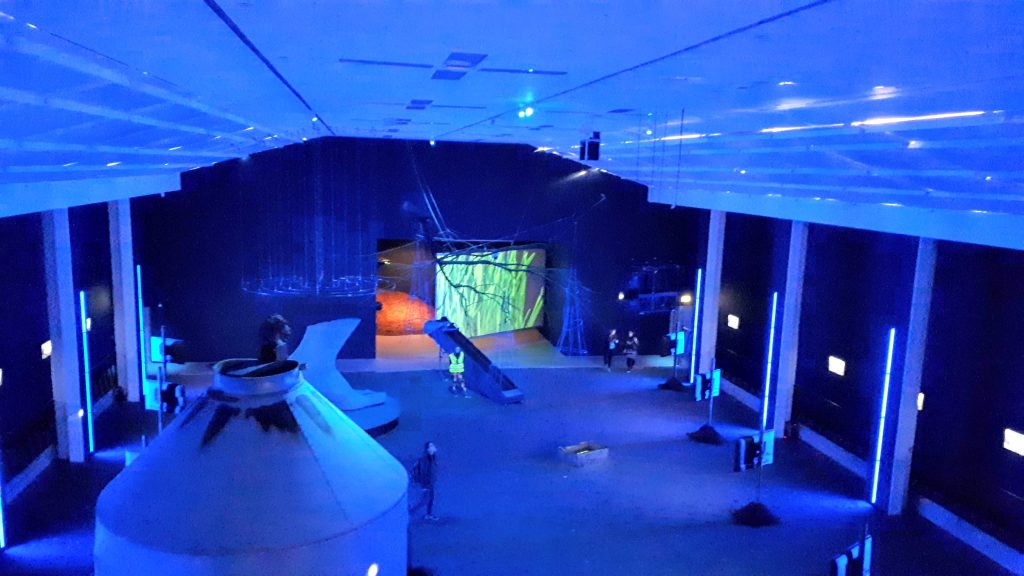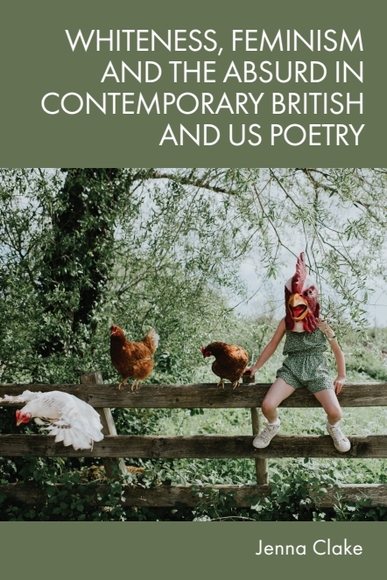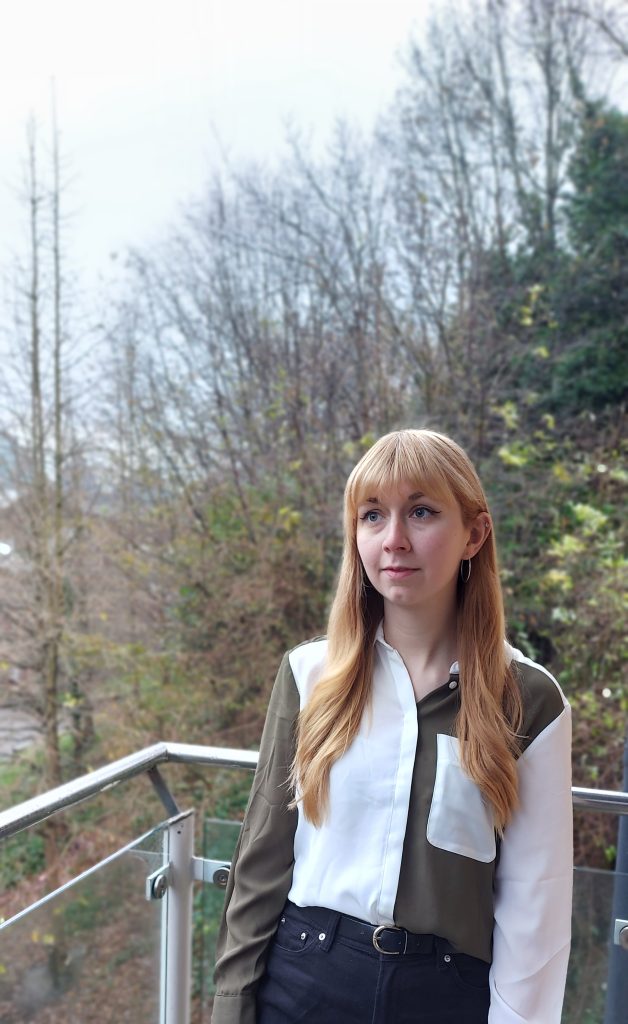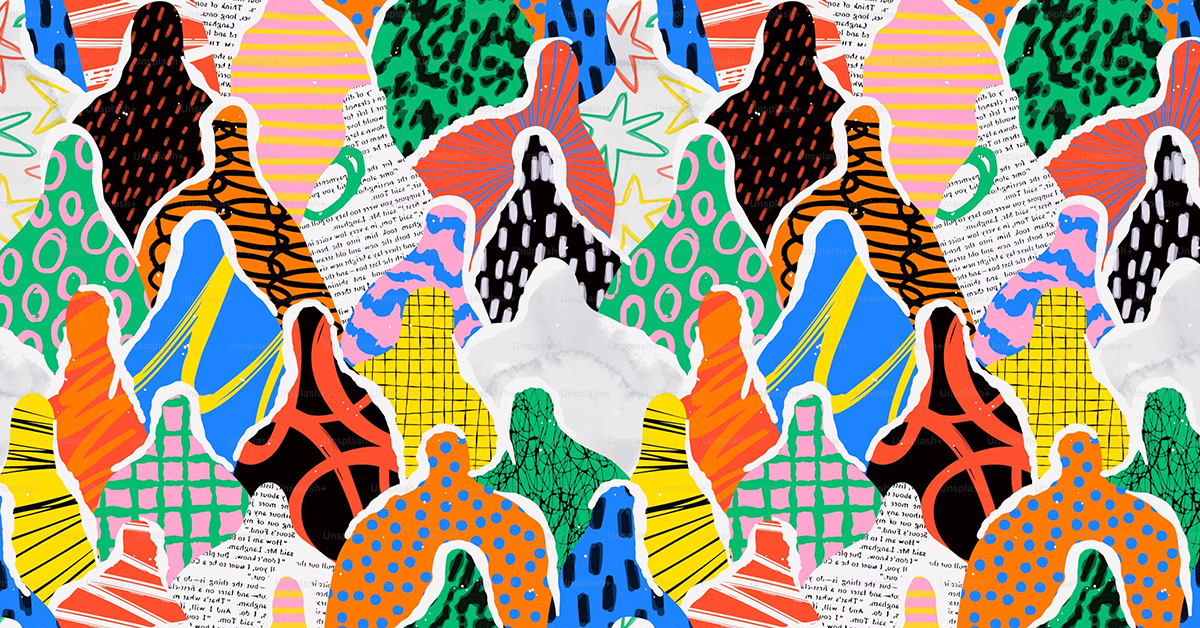
by Jenna Clake
Tell us a bit about your book.
My book is about a new aesthetic of British and US Absurdist poetry, which is particularly influenced by ideas of feminism and gender politics. The aesthetic also has a troubled relationship to whiteness, in that writers of colour are frequently shut out of conversations about avant-garde poetry, particularly the Absurd. My book therefore explores defines and characterises this aesthetic at the same time it tries to problematise it, asking questions about who we exclude when we write about the Absurd in poetry, what Absurdist poetry can do in times of turmoil, and how poets can interrogate whiteness. I focus on British and US poets including Rachael Allen, Emily Berry, Crispin Best, Caroline Bird, Franny Choi, Jennifer L. Knox, Morgan Parker and Jane Yeh, to investigate how they use the Absurd to destabilise ideas about race, gender and class, and imagine social change.
What inspired you to research this area?
I’ve long had an interest in the relationship between gender, feminism, and poetry, and as I explored this more, I was reading articles about race and poetry by Sandeep Parmar and Cathy Park Hong. To my mind, any research which wants to think about the relationship between writing and social change needs to think through the intersections of inequality. I am also a poet myself, and I write Absurdist poetry, so part of exploring these questions was really a personal endeavour: I want to challenge myself when I write, and I want to unpack what I’m doing. Looking at what other poets do, and how they do it, helps me to work through these questions. I also feel stimulated by the work of all the poets I’ve written about, and this was an excellent opportunity to spend lots of time with these poems and think about them carefully.
What was the most exciting thing about this project for you?
One of the most exciting things about this project was sharing it with my students in a module I teach, called ‘Writing Popular Culture’. The module investigates multiple modes and genres of writing (including poetry, fiction, creative non-fiction, plays) and how writers use popular culture to communicate ideas about social change through gender, race, and class. There is a symbiotic relationship between my book and the module: I began writing the book by writing my lectures; then I worked with my students through some of the broader underpinning ideas, which then influenced the later drafts of the chapters. The book also looks at the influence of popular culture on contemporary Absurdist poetry, thinking about our television-watching habits, Beyoncé, robots and cyborgs, and our fascination with apocalypses, so it was great to talk to my students about their responses to these ideas too.
Did your research take you to any unexpected places or unusual situations?
Perhaps not unexpected, but unusual in the best way. In 2018, Heather Phillipson – a highly decorated artist and Absurdist poet – exhibited her work The Age of Love at the Baltic gallery in Newcastle-upon-Tyne. The exhibition felt like a rave in a barn, bursting with flashing lights, a 90s trance track, meme-like images and videos of animals. I was thinking about the relationship between memes and poetry back then (and this relationship is discussed in the book, too), so the exhibition helped me to realise I was on the right track. There is a strong relationship between poetry and art, especially in the history of the surreal and Absurd, so, ever since, I have had Phillipson’s exhibition in mind whenever I’ve thought about all the things the Absurd can do.

What’s next for you?
I’m a poet, novelist, and critic, so I’m always writing something! Look out for some forthcoming reviews in Poetry London and the Poetry Review, which touch on some of the ideas in my book. I’m also working on my second novel and writing about poetry whenever I can.
Sign up to our mailing list to keep up to date with all of our free content and latest releases
About the book

The first study to consider how Whiteness pervades and is challenged in contemporary British and US Absurdist poetry
- Engages with Whiteness studies, socio-political theory, and scholarship on the Theatre of the Absurd to update definitions and understandings of contemporary Absurdist British and US poetry
- Argues that poetry provides a space in which to challenge Whiteness, nihilism, and prejudice, and offer positive social change
- Demonstrates the wider influence of Absurdism and popular culture in current British and US poetry, and explores its status as an aesthetic, rather than an organised ‘school’ or movement
About the author

Jenna Clake is Senior Lecturer in Creative Writing at Teesside University. Her debut novel Disturbance was published in 2023 and shortlisted for the Nota Bene Prize. Her poetry collections include Museum of Ice Cream (2021) and Fortune Cookie (2018). She has received an Eric Gregory Award from the Society of Authors, and was shortlisted for the Somerset Maugham Award in 2018.





